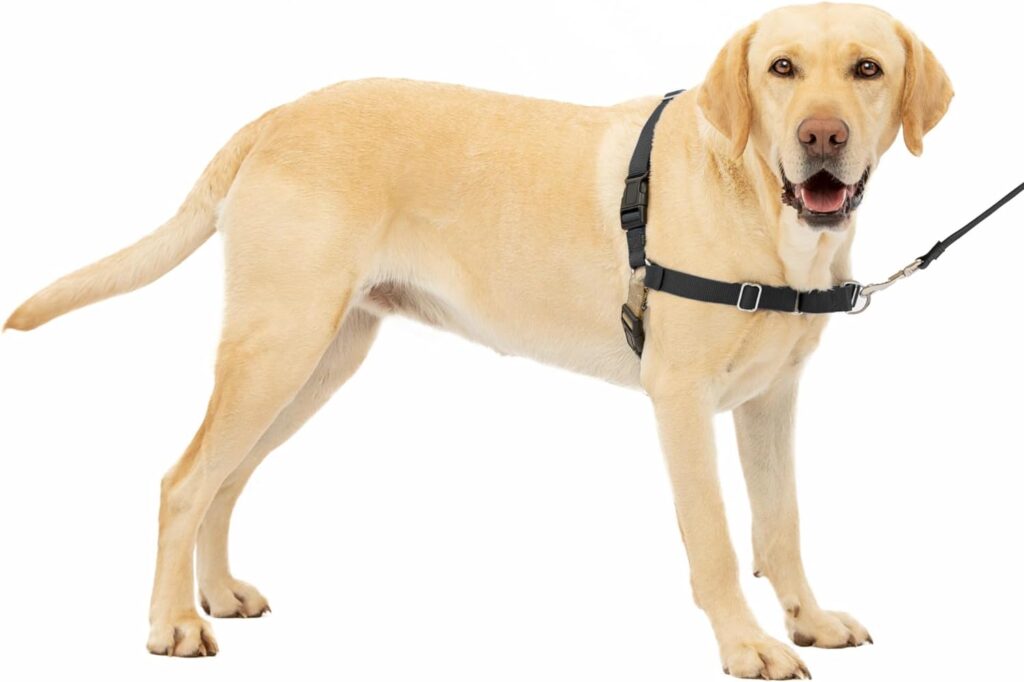Hello, fellow dog lovers! If you’ve ever felt like you’re being dragged through the park by your beloved furball, you’re not alone. Today, we’re tackling the age-old question: What’s the best way to stop your dog from pulling on the leash?
The Pulling Problem: What’s the Deal?
Ever notice how a peaceful walk turns into a tug-of-war? Pulling is a natural instinct for many dogs, driven by curiosity and a desire to explore. However, for us humans, it can be exhausting and even dangerous.
Why Do Dogs Pull?
Understanding why your dog pulls is the first step in addressing the behavior. Dogs often pull because they are eager to explore or because they feel restrained. The world is full of exciting smells and sights! They also might not understand that pulling can be unpleasant for you.
تقنيات التدريب للحد من السحب
- Use the Right Gear: A no-pull harness can be a game changer. These harnesses have a front leash attachment that gently steers your dog to your side when they try to pull ahead, making it physically difficult for them to pull.
- التدريب المتسق: Training your dog to walk nicely on a leash involves consistency. Use positive reinforcement techniques such as treats and praise to reward your dog for walking calmly by your side.
- Heel Command: Teach the “heel” command to encourage your dog to stay by your side rather than forging ahead. This command is essential for safe and enjoyable walks.

Behavioral Adjustments
Adjusting a dog’s behavior involves more than just physical restraint; it requires changing their mindset about what walking with you means. Implementing routine and consistent feedback during walks will help your dog understand the expected behavior.
The Role of Exercise and Mental Stimulation
Often, dogs pull because they have excess energy. Ensuring your dog gets enough physical and mental exercise can significantly reduce pulling. Activities like fetch, agility training, or puzzle toys can help tire them out before a walk.
Advanced Techniques: Professional Help
If your efforts at home don’t seem to be paying off, consider enlisting the help of a professional dog trainer. Sometimes, a few sessions with an expert can provide customized advice and techniques tailored specifically to your dog’s temperament and needs.
Building Better Walks Together
Remember, training your dog not to pull is a journey, not a race. It takes patience, consistency, and sometimes a bit of trial and error to find what works best for you and your furry friend.
الخاتمة
Teaching your dog not to pull on the leash enhances the walking experience for both of you, making it more enjoyable and stress-free. With the right techniques and tools, you and your dog can look forward to many pleasant walks together.
QQQPETS هي الشركة الرائدة في مجال تصنيع أحزمة الكلاب المخصصة للأحزمة القابلة للتعديل للكلاب وغيرها من العناصر التي قد يستخدمها الأشخاص عند تمشية كلابهم. هدفنا هو تسهيل تمشية الكلاب على أصحاب الحيوانات الأليفة من خلال توفير إكسسوارات قيمة. نحن نقدم مجموعة متنوعة من خدمات التخصيص بما في ذلك الشعارات المخصصة والأنماط المخصصة والمواد المخصصة والمقاسات المخصصة والمنتجات المخصصة والمزيد. إذا كنت ترغب في بدء نشاطك التجاري الخاص بمنتجات الكلاب، تحقق من موقعنا الإلكتروني واتصل بنا اليوم.
أسئلة وأجوبة حول الكلب
Can a dog still pull with a harness?
Yes, a dog can still pull with a harness, especially if it’s not a no-pull design or if additional training is not applied.
Are harnesses better for dogs that pull?
Harnesses, particularly no-pull types, can be better for managing pulling compared to collars, but training is also crucial.
ما هي أفضل طريقة لمنع كلبك من الشد؟
The best way to stop pulling is through consistent training combined with the use of a no-pull harness or head halter.
What is the best equipment to stop a dog from pulling?
The best equipment includes no-pull harnesses, head halters, and training leashes, used alongside positive reinforcement training.


